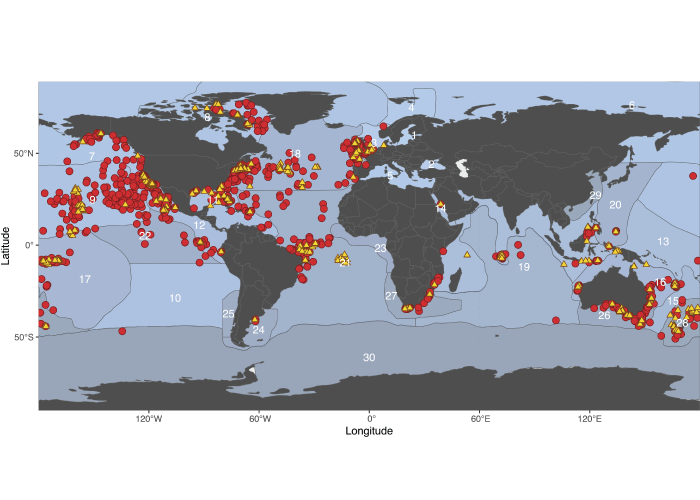Published in Science Advances | August 19, 2022
Abstract
Knowledge of the three-dimensional movement patterns of elasmobranchs is vital to understand their ecological roles and exposure to anthropogenic pressures. To date, comparative studies among species at global scales have mostly focused on horizontal movements. Our study addresses the knowledge gap of vertical movements by compiling the first global synthesis of vertical habitat use by elasmobranchs from data obtained by deployment of 989 biotelemetry tags on 38 elasmobranch species. Elasmobranchs displayed high intra- and interspecific variability in vertical movement patterns. Substantial vertical overlap was observed for many epipelagic elasmobranchs, indicating an increased likelihood to display spatial overlap, biologically interact, and share similar risk to anthropogenic threats that vary on a vertical gradient. We highlight the critical next steps toward incorporating vertical movement into global management and monitoring strategies for elasmobranchs, emphasizing the need to address geographic and taxonomic biases in deployments and to concurrently consider both horizontal and vertical movements.
Read the article in the link: bit.ly/3R5yy1D






